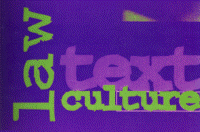Abstract
If the modern office produces and is managed through written documents or files, as Max Weber famously argued in his work on bureaucracy, then so too does the office – and increasingly the private citizen – destroy them. Enter the lowly paper shredder, a machine that proliferates waste and serves as the repository of carefully guarded secrets and confidential records, even as it is designed to eliminate the dregs of bureaucratic culture. Until recently, in the United States as elsewhere, paper was the medium of official state law. The 20th-century rise of the paper shredder and its paper trail, as we shall see, thus reveals the material, cultural and economic entanglement of written law with destruction and consumption, security, and privacy, not only in the U.S., it turns out, but worldwide. The trail leads from formal recognition of the paper shredder in a 1909 U.S. patent to its actual manufacture and development as a business machine in Germany twenty-five or so years later, from the shredder’s role in defining political moments to its appearance in cartoons that confuse it with fax machines or legal counsel, and from regulations governing the disposition of records to industrywide ‘certificates of destruction’ that ensure against the dangers of snoopy dumpster divers.
How to Cite:
Constable, M., (2019) “The Paper Shredder: Trails of Law”, Law Text Culture 23(1), 276-293. doi: https://doi.org/10.14453/ltc.662
Downloads:
Download PDF
View PDF
336 Views
1116 Downloads

